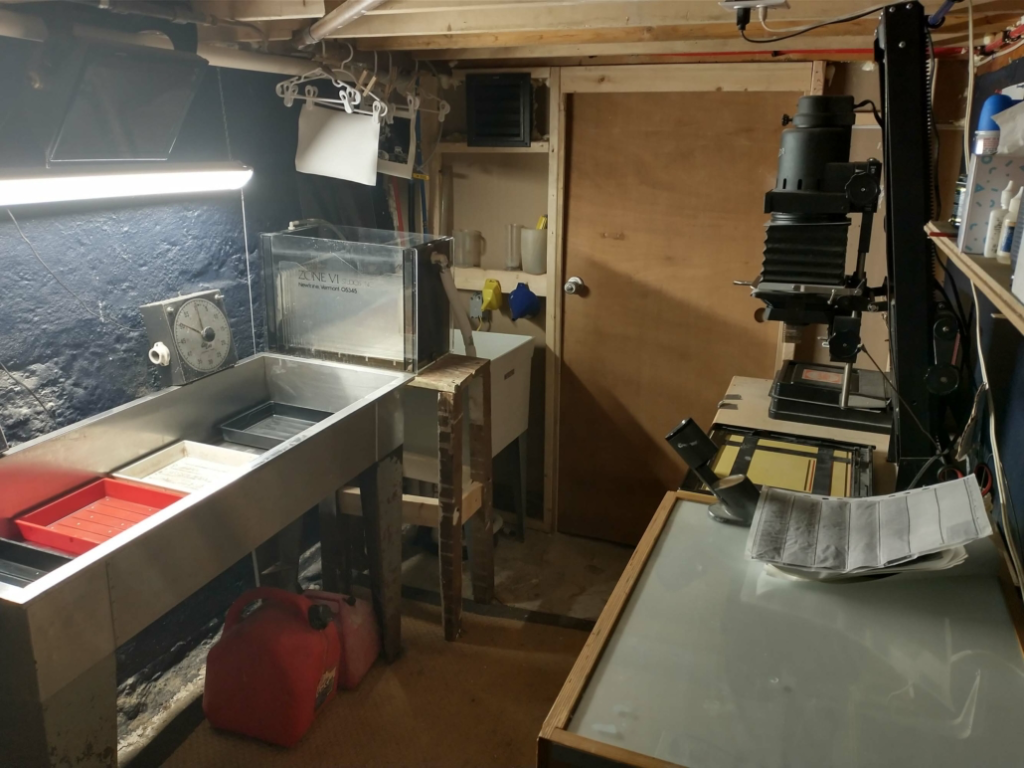Michael Stepansky is one of twelve artists selected as a Gallery 263 Small Works Project artist. This project presents artwork in flat files at the gallery and on our website for the duration of one year. All artists are based in Massachusetts.
Can you tell us a little about yourself?

I live in Holliston, MA with my wife and son and cats. I work for the Department of Mental Health. I enjoy yard work and some home repair, though really should stay away from tiling.
What kind of art do you make?
I’m a photographer. I shoot, develop, and print 35mm film.
What concepts does your art explore?
I’ve resisted the idea of projects and conceptual pictures for many years. As an amateur this is a luxury, so whatever concepts I explore have happened organically and are not deliberate. Having said that, I do tend to gravitate towards pictures that describe relationships among people or people and their environment, and within that, one could reasonably conclude that I focus on families, and particularly families with young children. I like pictures that are a little surreal and that evoke the pictures that inspire me, but definitely, always, are (with one recent exception) unposed and rooted in the real world.
Can you tell us about the work you have on view in your flat file drawer at the gallery?
images of work



This is a good sample of the range of pictures I take – landscapes, family pictures, candids, quasi-abstractions. Most of this work has been produced in the past 1-3 years. I wouldn’t say these are from a single body of work, though if I ever get around to it they probably could be sorted into 2-3 coherent projects. If anything, pictures of my son and one of his friend’s and his friend’s family are probably a little under-represented here, but otherwise these are the kinds of pictures I love.
Where do you make your work?
images of Michael Stepansky’s studio


Since the camera can go almost anywhere I aim to take it wherever I go, though I’m trying to do better with this. A lot of my pictures are of family and friends, so these pictures are often made at our house or their house or parks or events where we’re together. I’ve always enjoyed photographing at big public events – HONK, Parades, Carnivals, Antique Shows – and otherwise try to keep a camera in my car so I can make pictures wherever I’m heading, if I have time. In terms of physically making prints and developing negatives, I have a small darkroom in my basement.
What are your favorite materials to use? Most unusual?
I tend to be very habit-oriented and use the same few materials almost exclusively. I shoot with a Minolta X-700 (generally 35mm and 28mm lenses) and a Minolta CLE (40mm lens) and I print on 8×10 sheets of Ilford Fiber-Based Glossy paper. I have developed in Dektol for many years though have just started to use Fomatol P. I usually tone in selenium and use a little bleach from time to time. My favorite film – hands down – is Ilford Delta 100 developed in Rodinal. Otherwise I tend to shoot Tri-X developed in D-76 or HC-110 or Microphen.
While not strictly a material, I tend to think of music that way. I really need to be listening to music to print. I have two mixes I generally alternate between depending on how I feel: a “quiet darkroom” mix and a “loud darkroom” mix.
What historical and contemporary artists inspire you?
Oh my. Many, many. Among contemporary photographers: Troy Colby, Sally Mann, Ashley Leonard-Stohl, David Horton, Nancy Rexroth; Joel Meyerowitz; Brandon Thibideaux; Bruce Davidson; Abelardo Morell; Rania Matar; Emmet Gowin; Richard Kalvar; Cornell Watson. Among historical photographers: Brett Weston; W. Eugene Smith; Gary Winogrand; Lee Friedlander; Harry Callahan; Roy DeCarava; Robert Frank; Irving Penn. Without spending any time on other art forms, I’ll just say Charles Mingus and Beethoven and Camille Saint-Siens, Julius Eastman, Wilco, Charles Bradley, The Avalanches, writers, painters, etc. etc. All of it.
When did you decide you wanted to be an artist?
I don’t think there was ever a decision to do this. My parents had a lot of art when I was growing up. I started photographing things in high-school – over the Summer or going into NYC for a day. I guess I never really thought of myself as an artist, more so a person who takes pictures.
Is there anything else you would like to share?
There are truly 1000 ways a picture can go wrong with film, and I’ve lost innumerable pictures at every stage of the process. It is truly a marvel – a miracle – when it all goes right and there is a finished print at the end. I think Sally Mann said something like “there is nothing more beautiful than a silver print.” I don’t think I can quite agree with that, but top 10? Top 5? Yes, I could see that.